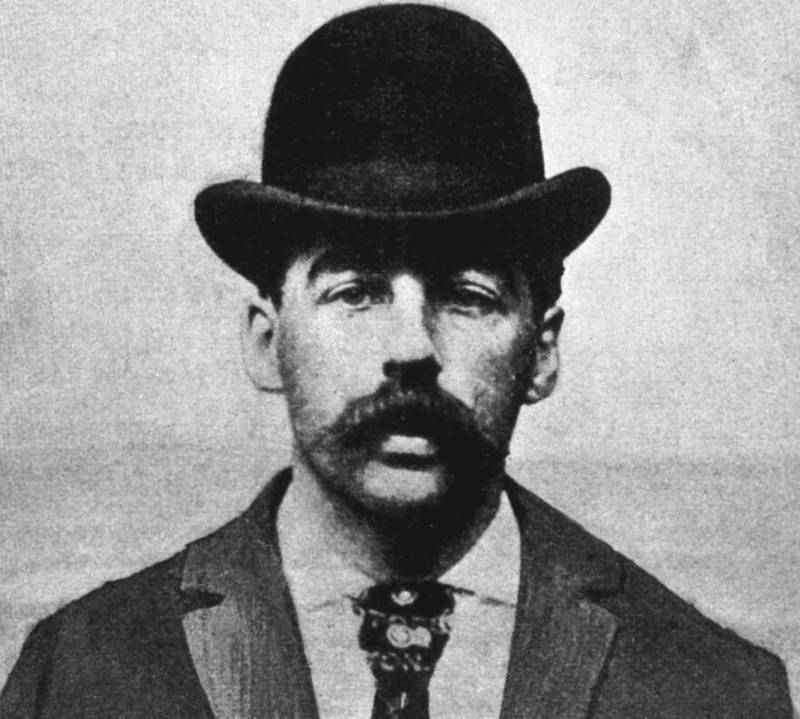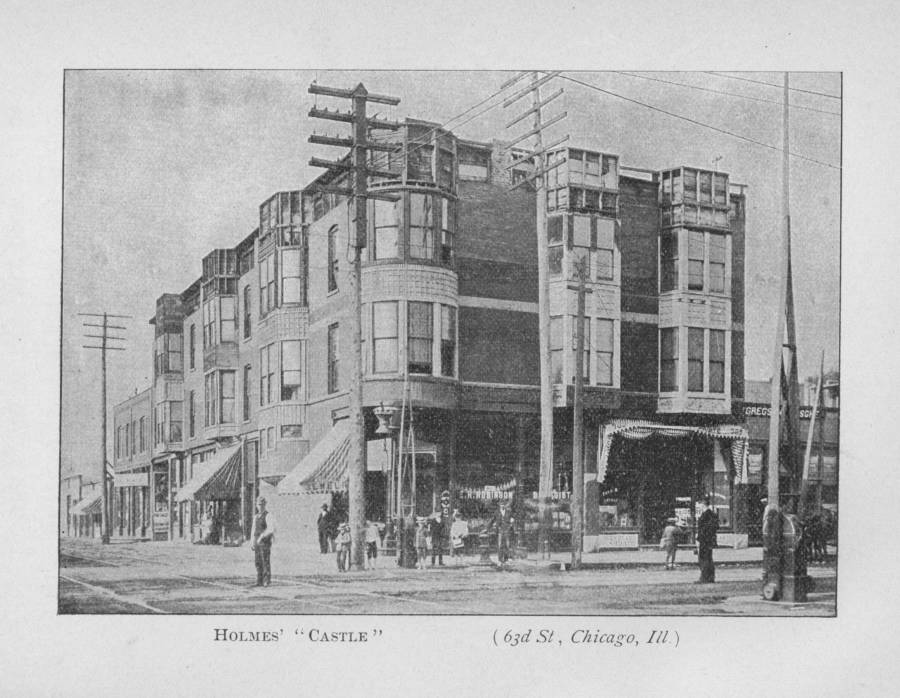H. H. Holmes, The “Beast Of Chicago”

MurderpediaHerman Webster Mudgett, better known as Dr. Henry Howard Holmes.
One of the most twisted American serial killers of all time, H. H. Holmes committed his murders inside the World’s Fair Hotel — better known as his “murder mansion” or the “murder castle.”
Born Herman Webster Mudgett, he changed his name to Henry Howard Holmes to escape his already long criminal record. Regarded as one of America’s first serial killers, Holmes came to Chicago in 1886 from the Northeast, with a new identity and thirst for bloodshed.

Upon arriving in the Windy City, Holmes got a job at a local drugstore. One year later, he bought the empty lot across the street and began to build his house of horrors, a place that allegedly included doors that opened to brick walls, homemade gas chambers, and puzzling mazes that were meant to bewilder victims before they ultimately met a gruesome end.
(It’s worth noting that some details about his mansion have been met with skepticism from historians, as certain designs may have been exaggerated by reporters of the era — but there’s no doubt Holmes was a serial killer.)
The building was big, broad, and covered an entire block. The first floor was storefronts, the third floor was apartments, and the second floor and basement contained the horrors that are now linked to Holmes.
Construction was finally completed in 1892. By 1894, Holmes would be behind bars, joining the ranks of the ghastliest American serial killers, as he confessed to at least 27 murders. The true number of people he killed is still unknown; the specially equipped mansion purportedly allowed Holmes to dispose of human bodies in cruel and untraceable ways.
The “Murder Castle” designed by Holmes was perfectly engineered to enact his terrible intentions. His murder spree purportedly began in 1893 during the World’s Fair, also known as the Columbian Exposition.
A huge influx of people visiting the city and needing a place to stay was just what Holmes needed to put his “murder mansion” to use.

Chicago History Museum/Getty ImagesThe World’s Fair Hotel, labeled “Holmes’ Castle” and later known as the Murder Castle.
When guests checked in to what they thought was a normal hotel, they were allegedly met with some very strange quirks. Some rooms contained five doors, while other rooms had none. There were airless chambers hidden beneath floorboards, and there was an intricate alarm system in the house that would alert Holmes whenever a guest left their room.
Holmes reportedly also had a special trapdoor in his bathroom that led to a staircase. At the end of the stairs was a windowless cubicle with a large chute that went all the way down to the basement. Holmes purportedly used this chute to transport bodies to his basement, where he would carry out demented experiments with surgical tools, torture devices, and acids.
Holmes fled Chicago shortly after the end of the World’s Fair, and he was eventually arrested in Boston. Interestingly, it was initially his long history of theft and dubious financial schemes that brought him down, but it didn’t take long before he was accused of more sinister crimes.
While he was behind bars, he was officially linked to nine murders, but it’s unknown how many people he killed and how exactly he operated his “murder mansion” during his crime spree. But at some point before his execution, Holmes bragged about killing 27 victims.
In some ways, Holmes remains one of the most mysterious American serial killers. Estimates of his body count vary widely. While some think he only murdered the nine people he was officially linked to, others believe he killed 20 people — and some even claim the number could be as high as 200.
Holmes represented himself at his trial, but this was one arena where his trickery and deceptive ways would prove unfruitful — he was found guilty by a unanimous jury and sentenced to hang for his crimes.
Still, Holmes found time to pen an autobiography, titled Holmes’ Own Story, before he met his demise in 1896. In reference to his deadly predispositions, he said, “I could not help the fact that I was a murderer, no more than the poet can help the inspiration to sing.”





